What is a Modal Analysis? What answers do we get out of it? How is it useful? What does it not tell us?
In this article, we’ll discuss where a modal analysis comes from, what it is and to some extent what it is not. We’ll also discuss why we do it, what we get out of it and how to use it.
To answer these questions, we need to dig a bit into the mathematics of dynamic systems first – hopefully not too much for your taste.
Unfortunately the article is already overly long, so the examples are kept to only those required to illustrate a concept. If time permits, a future blog will discuss practical examples and uses of modal analysis.
The Real-Eigenvalue Problem
In this section, we’ll derive the equation used to solve for mode shapes and frequencies. In the process, we’ll also try to describe why it happens (in mathematical terms). This isn’t too important – feel free to skip to the following sections as we’ll discuss the results of this in more intuitive terms later.
The discrete dynamic equation used in FEA is the following:

Where  is the mass matrix,
is the mass matrix,  is the damping matrix and
is the damping matrix and  the stiffness matrix. All three matrices are constant in linear dynamics.
the stiffness matrix. All three matrices are constant in linear dynamics.
 ,
,  and
and  are respectively the acceleration vector, velocity vector and the displacement vector.
are respectively the acceleration vector, velocity vector and the displacement vector.  is the load-vector. All three vectors vary as a function of time.
is the load-vector. All three vectors vary as a function of time.
If we neglect damping for the moment, the equation becomes:

We can neglect damping for a large class of problems because the amount of damping for most structures is well below 10%, which means slow damping of vibrations in the system.
Let’s say we have results-vectors  and
and  which is a solution to the dynamic equation such that:
which is a solution to the dynamic equation such that:

Let’s say we also have a second set of vectors  and
and  which is a valid result of the dynamics equation in which the load vector is set to zero:
which is a valid result of the dynamics equation in which the load vector is set to zero:

Then, summing the two equations yields:

This can be re-written as:

In other words, ( ) and (
) and ( ) is also a valid solution of the un-damped dynamic equation. As long as
) is also a valid solution of the un-damped dynamic equation. As long as  and
and  are both zero, there is obviously no problem. This is called the trivial solution.
are both zero, there is obviously no problem. This is called the trivial solution.
On the other hand, if there is a non-zero set of vectors  and
and  , then there are multiple possible solutions to the dynamic equation. Spoiler: As it turns out, there are multiple solutions to the dynamics equation. Only one of the solutions is valid, though – the initial conditions determine which one.
, then there are multiple possible solutions to the dynamic equation. Spoiler: As it turns out, there are multiple solutions to the dynamics equation. Only one of the solutions is valid, though – the initial conditions determine which one.
Solutions to the equation

Have the form


Where  is a constant vector, and
is a constant vector, and  represents the time-response which is simply a sine wave.
represents the time-response which is simply a sine wave.  is the radial frequency of the sine wave.
is the radial frequency of the sine wave.  is obtained by differentiating
is obtained by differentiating  twice.
twice.
Using this, we obtain:

Dividing by  results in the eigenvalue equation:
results in the eigenvalue equation:

In which  is the eigenvalue and
is the eigenvalue and  the eigenvector. Discussing ways to solve this equation is unimportant in the context of this article.
the eigenvector. Discussing ways to solve this equation is unimportant in the context of this article.
The solution to this equation is the vector  with a corresponding frequency
with a corresponding frequency  . These are very important and will be discussed extensively in this article.
. These are very important and will be discussed extensively in this article.
The implications of the Real-Eigenvalue Problem
Stepping back a moment: We are trying to obtain non-trivial solutions (i.e.  is not a zero vector) to the previous equation. If the matrix
is not a zero vector) to the previous equation. If the matrix  is positive definite (also called non-singular or invertible), then the only solution for
is positive definite (also called non-singular or invertible), then the only solution for  is the trivial solution.
is the trivial solution.
The only way to obtain a non-trivial solution is to pick a value of  which will make
which will make  singular. Once we find such a value for
singular. Once we find such a value for  , the next step is to find a corresponding vector
, the next step is to find a corresponding vector  that matches
that matches  . Notice that we say “a” vector instead of “the” vector. If we scale
. Notice that we say “a” vector instead of “the” vector. If we scale  by any real number, the scaled
by any real number, the scaled  is still a solution to the eigenvalue problem.
is still a solution to the eigenvalue problem.
For this reason, it is more convenient to think of  as a “shape”. It is also why it is called a “mode shape”. It is the shape that the structure oscillates within at frequency
as a “shape”. It is also why it is called a “mode shape”. It is the shape that the structure oscillates within at frequency  . Said in less technical terms: If we deform the structure statically into the mode-shape, then set it free, it will oscillate between the initial deformed shape and the negative of the initial deformed shape at a frequency
. Said in less technical terms: If we deform the structure statically into the mode-shape, then set it free, it will oscillate between the initial deformed shape and the negative of the initial deformed shape at a frequency  . True - Over time it will dampen out, but for low amounts of damping it will slowly decay in amplitude.
. True - Over time it will dampen out, but for low amounts of damping it will slowly decay in amplitude.
Another important point to remember is that there are multiple modes for a structure. Each mode shape occurs at a very specific frequency called the natural frequency of the mode in question. It is entirely possible for a structure to have multiple modes at the same frequency. An example is a beam with a symmetrical cross-section, clamped at one end: The first two bending mode shapes will be at the same frequency. However, the mode-shape will be in different planes.
Note also that, because our system is linear, the superposition principal holds: Each mode’s behavior can be solved separately. The total displacement due to all modes being present will be the sum of the results due to each mode. Each mode shape oscillates at the natural frequency of that mode. In other words, multiple modes, each at their own natural frequency will be present in the results.
Lastly, since the eigenvalue problem only has real values in all the matrices and constants, the displacement vector of the mode shape is also real. A real mode shape implies that the motion of all locations in the Finite Element model is either perfectly in phase (0° relative phase) or perfectly out of phase (180° relative phase).
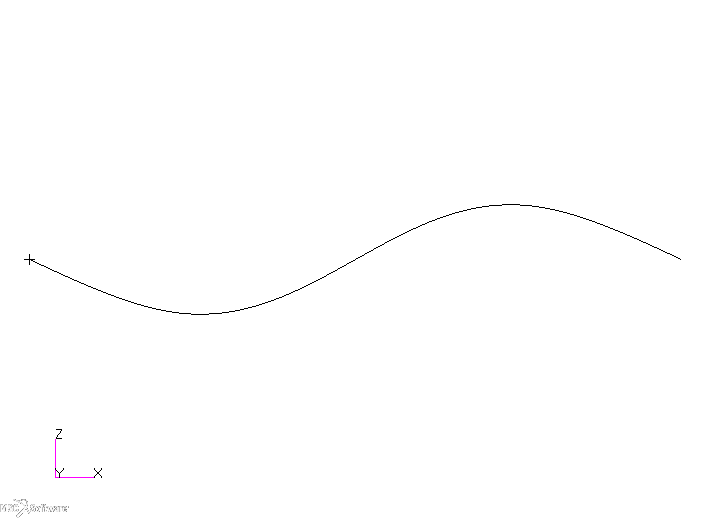
Figure 1: Real Mode-shape. All motion is either in phase or 180° out of phase

Figure 2: Complex Mode-shape. Every location can have a different phase angle
What a mode is
A mode is a combination of a deformed shape in which the structure will exchange kinetic-energy and stain-energy continuously, and the natural frequency at which the mode shape occurs. If only one mode is present:
- In the un-deformed state, the velocity at every point will be at its maximum. At this time, the kinetic energy is at its peak and the strain energy is zero
- At the maximum deformed state, the instantaneous velocity is zero. The kinetic energy at this point is zero while the strain energy is at a maximum
Said another way: If we deform a structure into any of its mode shapes and release it, it will oscillate continuously from the initial shape to the negative of the initial shape and back again, and at the natural frequency of the mode in question.
Remember that (without damping) we need zero external load to keep the oscillation going at constant amplitude. Therefore, a load applied at the natural frequency of the mode would cause additional motion for the mode, increasing the level of the oscillation. All the energy available from the load is absorbed into the structure. If there is no damping, the oscillation will grow to infinity, or rather until failure. With damping, the oscillation will grow to the point where the damping will remove exactly the same amount of energy from the system as the amount of energy being added by the excitation load. This can (and often does) lead to failure due to the relatively large oscillations that can result from a relatively small excitation force.
If the structure is deformed into a linear combination of mode shapes and released, each mode will be present in the resulting deformation over time. Furthermore, each mode will still oscillate at its own natural frequency. Below is an example of two mode shapes animated over time, as well as the combination of the two.
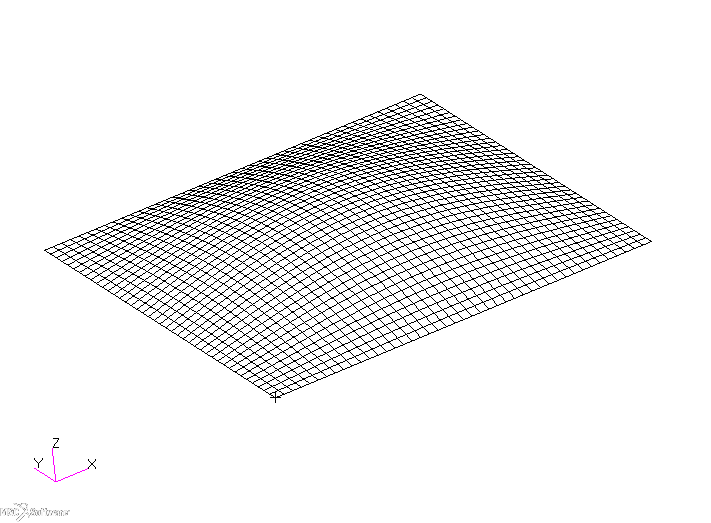
Figure 3: Mode 1, 21.9 Hz
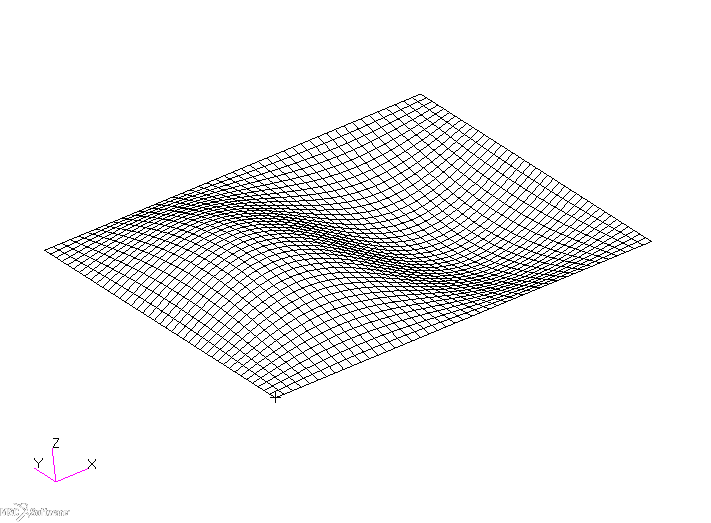
Figure 4: Mode 2, 51.5 Hz

Figure 5: Combination of mode 1 at 21.9 Hz and mode 2 at 51.5 Hz
In summary:
- A mode is a shape with a corresponding natural frequency at which the structure will absorb all the available energy supplied by an excitation
- A mode is a property of a structure since it is calculated without any load applied to the structure
What a mode is not:
As mentioned before, a mode has a shape, not a displacement. By this we mean that the magnitude of the mode shape is arbitrary. The aforementioned is however not the whole truth - There are a number of standard ways to scale the modes. Even so, this is still a scale factor chosen for mathematical reasons, not to try and represent anything real for the model. So from this perspective, the scale factor for each mode is still arbitrary.
There is a problem with a mode shape: A shape looks like a displacement. After all, both a displacement vector and a shape vector imply deformation of the structure. This means that it is entirely possible for the Finite Element solver to calculate all standard results for the mode shape. In other words, we can ask for stress or strain for each mode. These should be referred to as stress or strain shapes as they correspond to the mode shape.
These values are useless though. Wait. What?!? Yes, the values are nearly useless. Granted, the distribution is useful even if the values are useless. To see why: A mode is a shape, not a deformation. If you want, think of it as a displacement with a random scale-factor applied. The stress reported for each mode would be the stress you would obtain if the displacement of the structure is exactly the same as that of the displacement shape.
Think of it this way: If the maximum reported stress was 9 MPa, what is the stress state of the model? We don’t know yet – we have not applied any loads yet so why would we know what the stress in the structure is? The stress level would reach this value if (and only if) we deform the structure to the exact deformation level that the mode-shape has calculated, but the scale factor for the mode has been arbitrary.
As mentioned, the stress distribution is correct, even if the exact values are meaningless. We only need one measurement point to find the behavior of the complete structure if it oscillates at one frequency only.
Let’s use an example to illustrate the point. In figure 6, we have the stress plot of the first mode of a structure. Notice that the peak stress is 25 GPa. The matching deformation is 716mm. Note the excessive deformation due to the arbitrary scale factor applied by the solver.
If the real structure is oscillating at this first mode and we measure the peak deflection to be 1mm (instead of 716), we should scale both the deformation and stress by 1/716. This results in a maximum stress of 34.9 MPa and the stress distribution (and displacement distribution) as shown in figure 7.
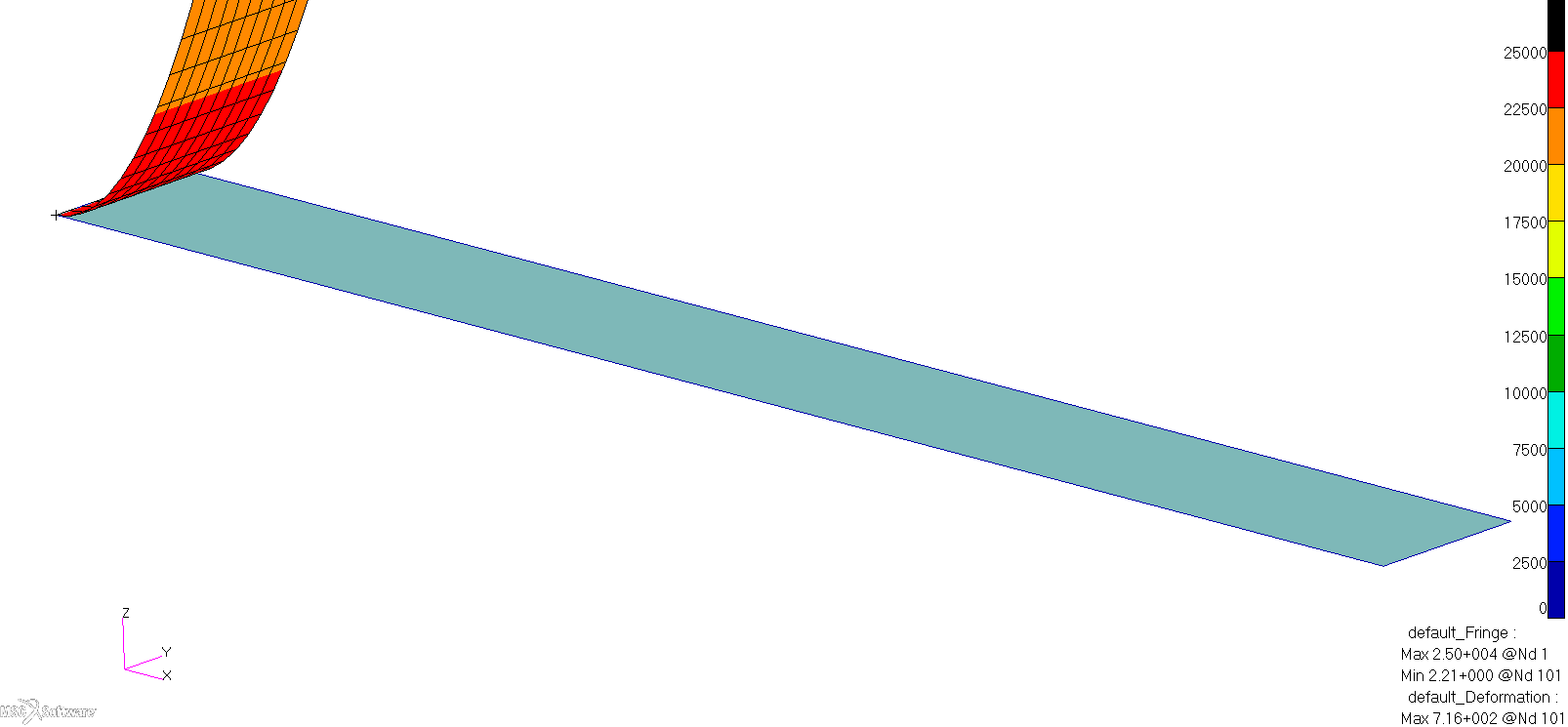
Figure 6: Displacement shape and matching stress for first mode. Max Stress is 25,000 MPa, Max displacement 716mm.
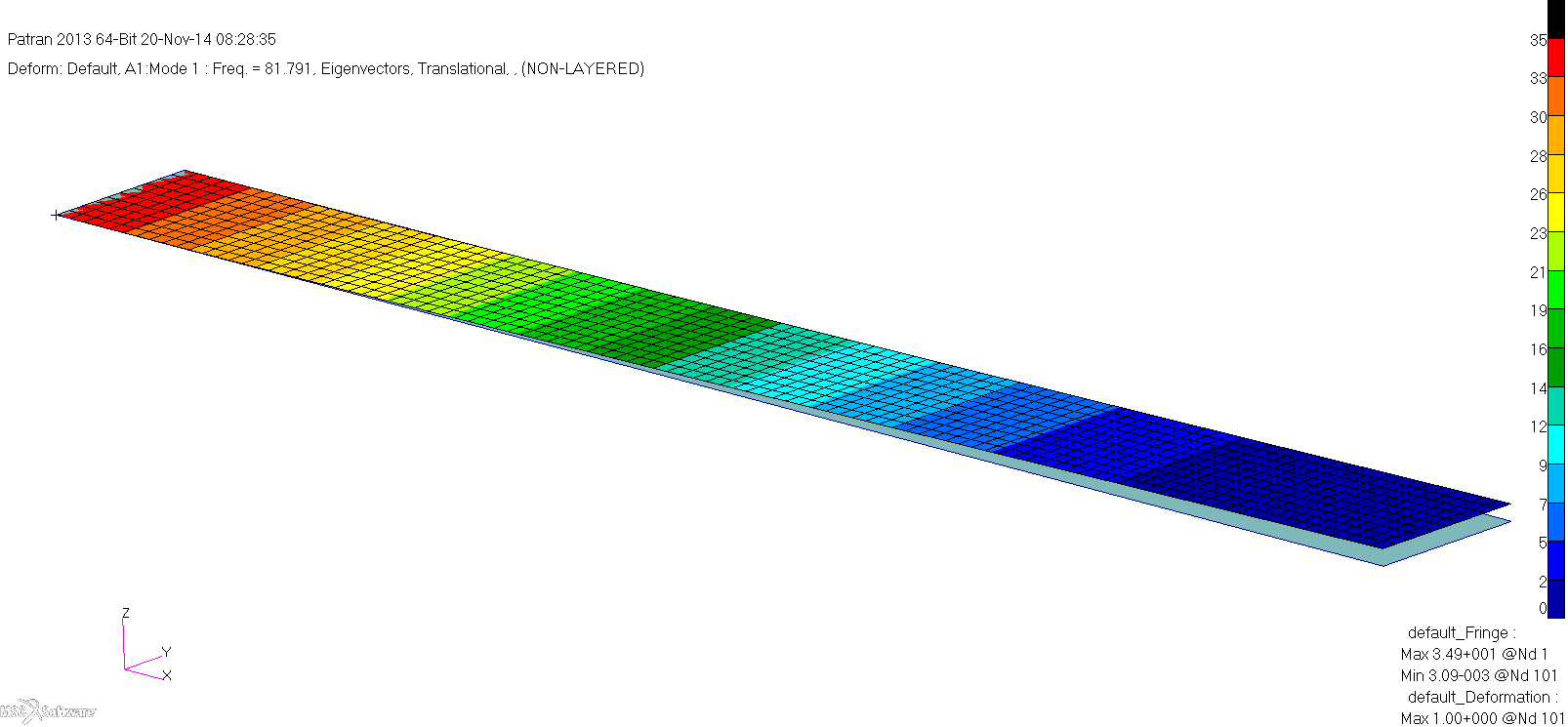
Figure 7: Displacement and stress scaled to the actual deformation based on measurements.
In Summary:
- A mode is not a displacement at a certain natural frequency - rather it is a shape.
- A mode is not the structural response due to an input loading since it is calculated without any load
- The results of a modal analysis, such as displacement, stress, strain and velocity, are not representative of the stress in the structure under dynamic loading: This is because the relative values between any two (or more) points in the structure have meaning, not the numerical values of any of the results.
What is modal analysis used for?
Finally time to get practical. The purpose of a modal analysis is to find the shapes and frequencies at which the structure will amplify the effect of a load. In this section we’ll list some examples of why we may need this information and how to use the answers.
Finding loose components
In static analysis, the structure has to be constrained in such a way that any load in any direction can be countered by a reaction force or moment. If the structure is under-constrained, a static analysis will report an error. The reasons for being under-constrained can be anything from a missing constraint to having a part that isn’t attached to the rest of the structure.
Finding these problems is easy with a modal analysis: The analysis will report a 0 Hz (i.e. static) mode for each un-constrained direction. They will not be exactly 0 Hz for two reasons: Numerical round-off during the solution process can cause a very low stiffness to ground, and also because the Eigen-solution is an iterative process. The frequencies will be very low though – usually significantly less than 0.001 Hz. These zero-Hertz modes are often referred to as “rigid-body-modes” or “strain-less modes”. This is because the structure (or a part of the structure) translates or rotates in such a way that no stress results. In other words, it moves in some direction as if it was rigid.
The displacement shape for these modes should provide enough information about which component(s) may be loose or which constraints are missing.
If a single component has no constraints, then the model will have six rigid body modes. They correspond to the component translating respectively in X, Y and Z and Rotating about X, Y and Z. Notice that the modes is unlikely to be aligned with the global coordinate system as a linear combination of rigid body modes is also valid as a rigid body mode.
Deciding which rotational speeds are dangerous
If we have a structure that is rotating, any unbalanced mass will cause a sinusoidal load. If this coincides with a natural frequency, excessive motion will result.
To be honest, an extension to the dynamics equations are required if we want to look at rotating shafts as this starts to form part of rotor-dynamics. In rotor-dynamics, the natural frequencies are a function of the speed it is spinning at.
On the other hand, if we want to look at blades attached to the shaft or the load transferred to the casing at speeds well below the first rotor-dynamic shaft mode, then we need to perform a modal analysis on the blade or casing to find the rotor speeds that match natural frequencies of these.
We are sometimes forced to operate a shaft at a speed above the first (or even later) mode of a structure. If we slowly spin up the shaft, this mode (or modes) will be excited significantly. By slowly accelerating to a point somewhat before a mode, then accelerating quickly to a speed higher than the mode, that mode will not have time to reach steady state. This will drastically reduce the vibration level.
Finding out where to constrain or load a structure
Since real structures have damping, exciting them at their natural frequency will reach a steady state. Hopefully this steady state value is well before failure.
If we apply a known force at a natural frequency, the location where we apply it will determine the maximum displacement of the mode. If we apply it to the point of maximum motion in the direction of the applied load, the amount of energy we can add in a cycle is significantly more than if we apply it to a point with less motion. This will result in higher amplitude of motion for the same excitation level.
If we can apply it to a point on the model which has zero movement for a given mode, no energy will be added even if we excite at exactly the mode. Such points are called the “nodes” of a mode.
While sounding great, the nodes will in reality be at different locations for different modes. Finding a location where the displacement is relatively small for all modes is then a better choice than a node for a specific mode.
Finding out how to move a mode
If we have a mode at an inconvenient frequency, we may want to move the mode (or rather the frequency of the mode). The frequency can be increased or decreased based on the requirements of the structure.
For a single degree of freedom spring-mass, the natural frequency  is equal to
is equal to  with
with  the spring stiffness and
the spring stiffness and  the mass. Increasing the natural frequency requires an increase to
the mass. Increasing the natural frequency requires an increase to  or a decrease to
or a decrease to  .
.
Real systems do not have such a simple equation, but the same principal holds. Increasing the stiffness of the mode-shape or decreasing the mass of the mode shape will increase the natural frequency of the mode. Bear in mind that adding stiffness also means adding mass. Therefore we need a way to increase stiffness faster than increasing mass, or reducing mass faster than reducing stiffness.
There are some tools to help us find the location where we should increase stiffness or decrease mass:
- The location(s) with the highest strain energy density is the locations that have the most impact on the stiffness of that mode. By adding stiffness in these locations in the direction in which the strain is greatest will add the most stiffness with the least amount of mass.
- The locations with the maximum kinetic energy density are those where changing the mass will have the greatest effect.
For a number of mode shapes, the location of maximum strain energy density and maximum kinetic energy density differ. For these, adding stiffness or reducing mass is relatively simple.
In the cases where they coincide, we need to add stiffness significantly faster than mass. An example of how this may be achieved is as follows: For a first-order bending mode of a flat plate (see figure 8 below), doubling the plate thickness will double the mass, but increase the cross-sectional inertia (and by implication the bending stiffness) to the 3rd power. Another approach would be to add a diagonal rib to the plate as it would add less weight to the plate while adding even more bending stiffness than simply increasing the thickness would.
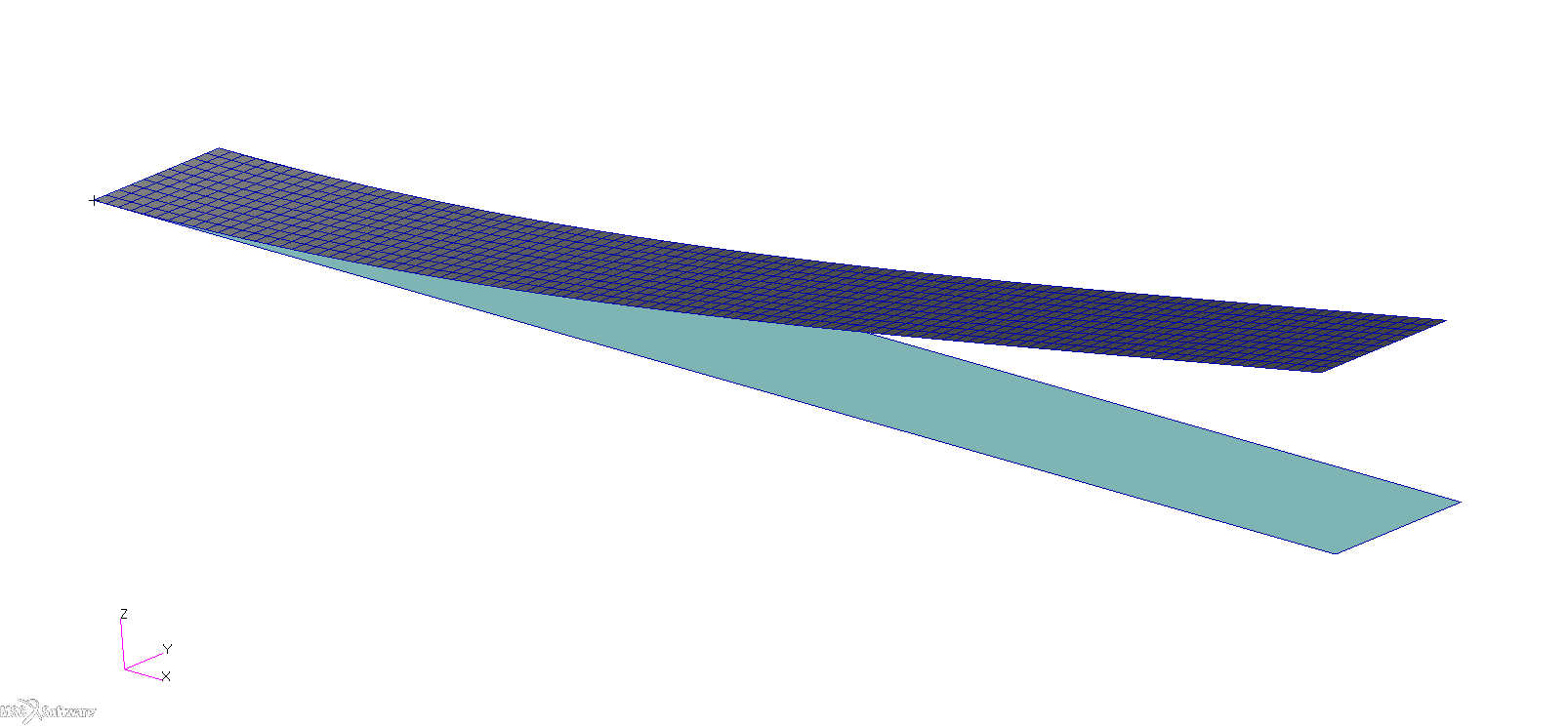
Figure 8: First bending mode. The deformation is scaled in the post-processor to make it easier to visualize
Note also that by comparing the different modes, it is often possible to selectively change the frequencies of modes by adding material to locations that will significantly stiffen up only specific mode shapes.
Modal dynamics (classical dynamics)
Modal methods are a way to drastically decrease the number of degrees of freedom solved in linear dynamics. Discussing the intricacies of modal dynamics is well outside the scope of this article. In short, it transforms the full dynamics system into a system that only allows motion that is a linear combination of the mode shapes used in the simplification. Instead of solving for every degree of freedom as a function of time, modal methods solve for a scale factor of each mode as a function of time.
In other words, we’re solving an approximate model. As approximations go, this is most likely the most efficient approximation in terms of accuracy vs. solution time for large models.
Conclusion
Virtually all analysis types solves for some form of response due to some type of load. A modal analysis is rather unique in this regard for at least the following reasons:
- A modal analysis solves an equation for which there is no applied load
- A modal analysis gives us specific information on the characteristics of the structure instead of reporting a response
What a modal analysis tells us is at which frequency the structure will absorb all the energy applied to it, and what the shape looks like which corresponds to this frequency.
While this seems to tell us very little, there are a range of uses for a modal analysis varying from finding mistakes in models up to providing information on how to change a structure in order to move a mode.
Finding out exactly how the structure will respond requires some other type of analysis though – A topic for another time.
Resources
A modal analysis can be conducted using any of the software products from MSC Software:
MSC Apex
MSC Nastran
Marc
And you can download a free student version here now.
For a list of other products we support, visit our Products page.




 is the mass matrix,
is the mass matrix,  is the damping matrix and
is the damping matrix and  the stiffness matrix. All three matrices are constant in linear dynamics.
the stiffness matrix. All three matrices are constant in linear dynamics. ,
,  and
and  are respectively the acceleration vector, velocity vector and the displacement vector.
are respectively the acceleration vector, velocity vector and the displacement vector.  is the load-vector. All three vectors vary as a function of time.
is the load-vector. All three vectors vary as a function of time.
 and
and  which is a solution to the dynamic equation such that:
which is a solution to the dynamic equation such that:
 and
and  which is a valid result of the dynamics equation in which the load vector is set to zero:
which is a valid result of the dynamics equation in which the load vector is set to zero:


 ) and (
) and ( ) is also a valid solution of the un-damped dynamic equation. As long as
) is also a valid solution of the un-damped dynamic equation. As long as 


 is a constant vector, and
is a constant vector, and  represents the time-response which is simply a sine wave.
represents the time-response which is simply a sine wave.  is the radial frequency of the sine wave.
is the radial frequency of the sine wave.  is obtained by differentiating
is obtained by differentiating  twice.
twice.

 is the eigenvalue and
is the eigenvalue and  is positive definite (also called non-singular or invertible), then the only solution for
is positive definite (also called non-singular or invertible), then the only solution for 






 is equal to
is equal to  with
with  the spring stiffness and
the spring stiffness and  the mass. Increasing the natural frequency requires an increase to
the mass. Increasing the natural frequency requires an increase to 




